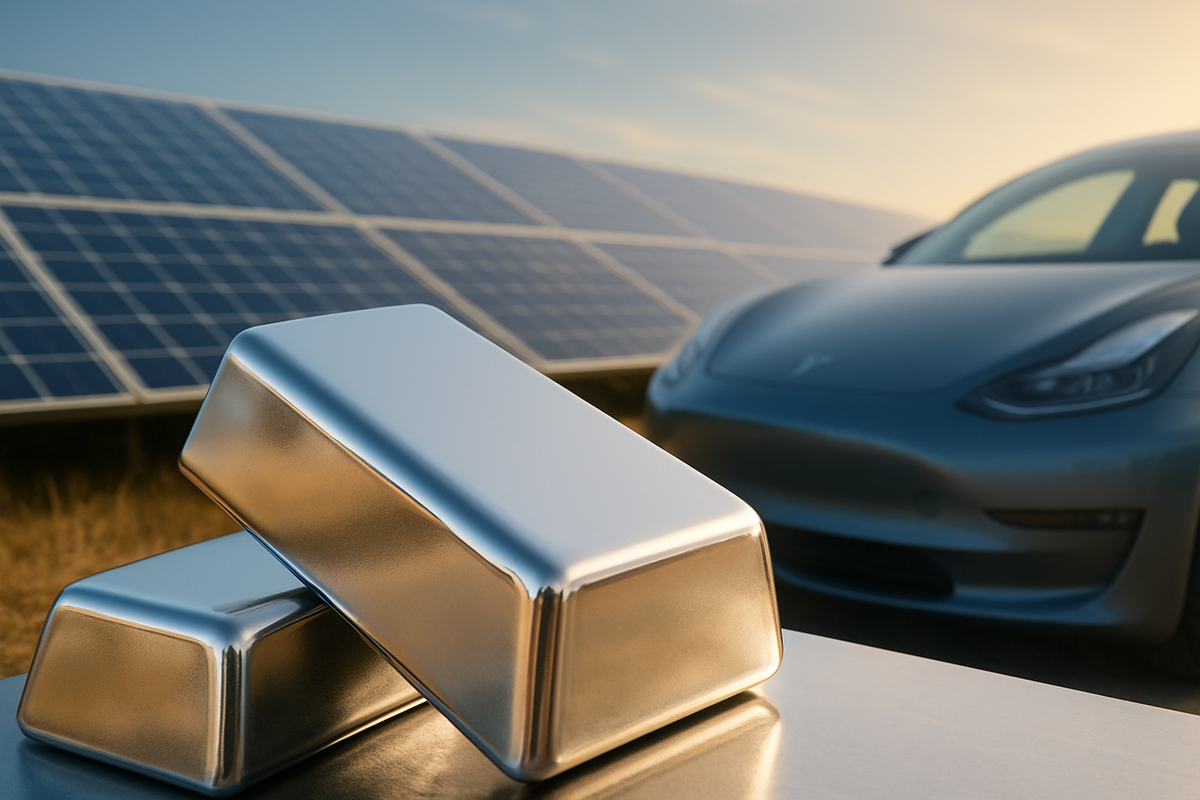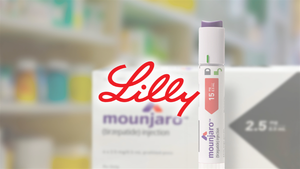
Silver, long revered as a precious metal and industrial workhorse, is now experiencing an unprecedented surge in demand, fundamentally reshaping its market dynamics. The clean energy revolution, particularly the explosive growth in solar power and electric vehicles, has propelled silver into a new era, cementing its status as a critical green technology metal. This escalating industrial appetite, highlighted by recent reports from CarbonCredits.com, is driving silver prices to record highs and creating significant ripple effects across global financial markets and the mining industry.
The metal's exceptional electrical and thermal conductivity makes it indispensable for a myriad of clean energy applications, from photovoltaic cells that capture sunlight to the intricate electrical contacts within electric vehicles. This strategic importance has led to record-hitting demand figures, with projections indicating a continued upward trajectory. As the world accelerates its transition away from fossil fuels, silver finds itself at the heart of this global decarbonization effort, transforming its investment profile and spotlighting the companies poised to benefit from this monumental shift.
The Dawn of a Green Metal Era: Record Demand and Market Reactions
The narrative of silver's resurgence is inextricably linked to the rapid expansion of the clean energy sector. For years, silver's industrial applications have been a significant component of its overall demand, but the scale and pace of its adoption in green technologies are unprecedented. The solar photovoltaic (PV) industry stands as the single largest driver, consuming vast quantities of silver in the form of paste essential for converting sunlight into electricity efficiently.
Data underscores this dramatic shift: in 2015, the PV industry utilized approximately 60 million ounces of silver, a figure projected to skyrocket to 232 million ounces by 2024. This represents a substantial portion of total silver demand, with BloombergNEF estimating that each gigawatt of solar capacity requires around 12 tonnes of silver. By 2030, silver demand for solar panels alone could surge by nearly 169%, reaching roughly 273 million ounces and constituting approximately one-fifth of the total global silver demand. Beyond solar, electric vehicles (EVs) are also significant consumers, with each EV using 1.5 to over 2 times more silver than traditional internal combustion engine vehicles for various electrical components and battery management systems. The projected sale of 30 million EVs by 2030 further solidifies this demand.
This escalating industrial demand, coupled with persistent supply constraints, has created a structural deficit in the silver market for several consecutive years, with a cumulative deficit of 474 million ounces between 2021 and 2023. This deficit is expected to widen by 17% to 215.3 million ounces in 2024. Such an imbalance has inevitably translated into a significant appreciation in silver prices. As of October 2024, Comex silver experienced an 11% jump, marking its largest monthly gain since May 2024, with year-to-date prices soaring by 46%. In 2025, silver climbed to record levels, surpassing US$53 per ounce, an 85% gain year-to-date, significantly outpacing gold's rise. Analysts now predict silver prices could test the $55–$60 range within the next two years if current deficits persist.
Initial market reactions have been robust, with increased investor interest in silver-backed exchange-traded funds (ETFs) and a renewed focus on mining companies with significant silver exposure. The recognition of silver as a "green technology metal" has broadened its appeal beyond traditional precious metal investors, attracting institutional funds keen on exposure to the burgeoning clean energy sector. This fundamental shift underscores silver's critical role in achieving global climate goals and its evolving identity as a strategic commodity.
Mining for Green Gold: Winners and Losers in the Silver Rush
The surging demand for silver from the clean energy sector presents a compelling landscape of opportunities and challenges for public companies, particularly those involved in silver mining and exploration. Companies with significant silver reserves and efficient extraction operations are poised to be major beneficiaries of this trend.
One such company is Sierra Madre Gold & Silver (SMGS.V). As a junior exploration and development company, Sierra Madre Gold & Silver focuses on projects primarily in Mexico, a region historically rich in silver deposits. While specific details on their current production volumes or direct contracts with clean energy manufacturers might not be immediately public, their strategic positioning in a prolific silver-producing region makes them a potential long-term winner. Increased silver prices directly enhance the economic viability of their exploration projects and existing resources, potentially attracting further investment and accelerating development. For companies like Sierra Madre, higher silver prices can transform marginal projects into highly profitable ventures, offering significant upside for shareholders.
However, the benefits extend beyond just exploration companies. Established silver producers like Pan American Silver Corp. (PAAS.NASDAQ), First Majestic Silver Corp. (AG.NYSE), and Hecla Mining Company (HL.NYSE), which already have significant operating mines, are directly benefiting from the higher prices. Their existing production capacity allows them to capitalize immediately on the increased revenue per ounce of silver sold. These companies may also see increased capital for expansion, exploration, and operational improvements, further solidifying their market positions.
On the flip side, companies heavily reliant on silver as a raw material for their products, particularly in the clean energy sector, could face increasing input costs. While the overall demand for their products (e.g., solar panels, EVs) remains strong, higher silver prices might squeeze profit margins or necessitate price increases for end-consumers. This could pose a challenge for manufacturers who have not secured long-term silver supply contracts or diversified their material sourcing. However, given the inelasticity of silver supply (as about 70% is a byproduct of other metal mining), securing consistent supply will likely become a strategic imperative for these manufacturers, potentially leading to direct investment or partnerships with silver miners.
Wider Implications: A Strategic Commodity in a Decarbonized Future
The current surge in silver demand driven by the clean energy sector is not an isolated event but rather a pivotal moment reflecting broader industry trends towards decarbonization and sustainable technologies. This event fundamentally alters silver's role in the global economy, elevating it from a mere precious metal or industrial input to a strategic commodity essential for the world's green transition.
This shift fits squarely into the broader trend of critical mineral scarcity and the push for secure supply chains. As nations globally commit to ambitious climate goals, the demand for materials like silver, copper, lithium, and rare earth elements will only intensify. The clean energy transition, therefore, is inadvertently creating a new class of "green critical minerals," with silver at the forefront. This could lead to increased governmental interest in securing domestic or allied sources of silver, potentially influencing trade policies and fostering new international agreements around mineral supply. The inelastic nature of silver supply, with roughly 70% produced as a byproduct of other metal mining, exacerbates concerns about potential shortages and makes the market particularly sensitive to demand shocks.
The ripple effects extend to competitors and partners across the supply chain. For example, innovations in solar cell technology aimed at reducing silver content, or exploring alternative conductive materials, could gain traction. However, given silver's superior properties, fully replacing it remains a significant challenge. Partnerships between clean energy manufacturers and mining companies could become more common, moving towards direct off-take agreements or even joint ventures to ensure stable supply and manage price volatility. This could also spur innovation in silver recycling technologies, especially from end-of-life solar panels, though such efforts are unlikely to fully bridge the projected supply gap in the short to medium term.
Historically, silver has often been overshadowed by gold, but its dual role as both a monetary asset and an indispensable industrial metal makes its current trajectory unique. While past silver rallies have often been tied to inflationary pressures or speculative bubbles, the current demand is underpinned by a fundamental, structural shift in global industrial consumption. This makes the current rally potentially more sustainable and less prone to sudden reversals, provided the clean energy transition continues apace. Regulatory and policy implications could include incentives for domestic silver mining, investment in advanced extraction technologies, and potentially even strategic stockpiling by governments to safeguard critical supply chains.
The Road Ahead: Navigating a Greener Silver Market
The trajectory for silver, propelled by the clean energy sector, points towards a future characterized by continued strong demand, persistent supply challenges, and potentially sustained elevated prices. In the short term, the market is likely to remain in a structural deficit, meaning that demand will continue to outstrip supply, maintaining upward pressure on prices. Investors should anticipate continued volatility, typical of commodities with tight supply-demand dynamics, but with an underlying bullish trend.
Long-term possibilities include significant capital expenditure by mining companies to expand existing operations and develop new projects, although the lead time for new mine development can be extensive. This will be crucial to alleviate some of the supply constraints. We may also see increased exploration efforts in known silver-rich regions and the adoption of more efficient mining and processing technologies to maximize yield. Strategic pivots for clean energy manufacturers will likely involve securing long-term supply agreements, potentially through direct investments in mining companies or by hedging against price fluctuations. The development of advanced recycling infrastructure for silver, particularly from electronic waste and retired solar panels, will also become increasingly vital to circularize the supply chain and mitigate future shortages.
Market opportunities will emerge for companies involved in silver exploration, mining, refining, and recycling. Furthermore, companies developing technologies to reduce silver content in clean energy applications, or finding viable alternatives, could also find a niche. Challenges will include managing environmental and social governance (ESG) risks associated with mining, navigating complex regulatory landscapes, and the inherent capital intensity of mining operations. Geopolitical factors could also play a role, as many significant silver deposits are located in politically sensitive regions.
Potential scenarios include silver becoming a much more actively managed strategic commodity by governments and industries, similar to oil or rare earth elements. Another scenario could see a significant breakthrough in silver-alternative materials for solar cells, which, while unlikely to completely replace silver, could temper demand growth in the very long term. However, the most probable outcome is a continued revaluation of silver as an indispensable metal for the global green economy, cementing its place as a critical component of our sustainable future.
Conclusion: Silver's Enduring Green Legacy
The narrative surrounding silver has undeniably transformed. No longer solely a store of wealth or a component in traditional industries, silver has emerged as a cornerstone of the clean energy revolution. The unprecedented demand from solar photovoltaic cells and electric vehicles has created a persistent structural deficit in the market, driving prices to historic highs and fundamentally reshaping its investment appeal and market dynamics. This shift underscores silver's critical and irreplaceable role in the global transition to a sustainable, decarbonized future.
Key takeaways from this evolving market include the recognition of silver as a "green technology metal," the sustained upward pressure on its price due to inelastic supply and surging demand, and the renewed focus on mining companies like Sierra Madre Gold & Silver (SMGS.V) and established producers such as Pan American Silver Corp. (PAAS.NASDAQ) as beneficiaries. The wider significance highlights silver's new status as a strategic commodity, prompting potential changes in governmental policies and fostering innovation across the supply chain.
Moving forward, investors should closely watch several key indicators: the continued growth rate of the clean energy sector, particularly solar and EV adoption; the global mine supply figures and any new project developments; and advancements in silver recycling technologies. The interplay between these factors will dictate silver's price trajectory and market stability. The metal's dual identity as both a precious asset and an essential industrial input ensures its enduring significance, but its newfound prominence in the green economy solidifies its lasting impact for decades to come. Silver is not just shining; it is powering the future.
This content is intended for informational purposes only and is not financial advice


















